CPEC and a realignment in Balochistan great game
The separatist movement in Balochistan has seen a resurge after a decade. It is always said, and we have seen, that whenever the separatist movement gains strength in the province, the momentum lasts for two or three years only.
We saw this in 2000 and then it completely died down in 2013. Now it’s starting to grow again. Whenever the violence peaks, we look to our agencies to control it and to act against it — and they are quite successful.
We saw in 2013 that the security situation improved remarkably. At the time there was a need for governance and the need to focus on the basic problems of Balochistan, especially those related to health, education, and roads. But they were not given preference.
Even today the government of Balochistan is ignoring these issues. They hold seminars to claim that a lot of work is being done for the development and prosperity of the people and to improve the quality of life. Government officials make tall claims as if rivers of milk and honey were flowing in the province, but they are not giving anything to the people.
On the ground, the government does not have the capacity to utilize the entire budget allocation for development. This year too, according to the Auditor General of Pakistan report, the Balochistan government could not spend Rs53 billion.
With its extremely limited capacity to solve problems, the government looks up to the army and other agencies to control the wave of terrorism so that they can run their affairs. The country’s security institutions can control terrorism, but they cannot solve problems.
This requires political commitment, which most of Balochistan’s politicians have failed to show — even those who call themselves nationalists. They are losing ground among people. We have seen that the entire Makran region, which was once the stronghold of the nationalists, was captured by the Haq Do Movement in the recent local bodies elections.
Apparently, the Baloch people are not supporting them either. There is a realization among the masses that both nationalists and mainstream parties like PML-N or PPP are not serious about solving their problems. They just talk and when things get too bad, they throw a package that is no better than as the Urdu proverb goes, “a cumin into the camel’s mouth”.
Such packages solve temporary problems but do not offer a lasting solution to the core problem of militancy.
One needs to examine the cause behind it. For a long time, the Afghan Taliban have been saying that there is no TTP in Afghanistan, but two years ago when the Taliban was fighting American forces in Afghanistan, the TTP pledged allegiance to Mullah Haibatullah and joined them in the fight.
One must understand the only reason Balochistan is being targeted now is the threat to American interests in the province. With the renewed government interest in its projects, the CPEC is progressing rapidly. In the past, these projects stalled, and so did the TTP attacks.
With the resumption of work on its projects, CPEC is an active target once again.
If you look here, be it TTP or ISIS, their focus was on the northern areas of Balochistan. The south was largely spared, especially the areas of Quetta, Pashin, Chaman, and Zhob.
But now their presence is spreading to Makran. Their people have surfaced in the region and they have formed a local alliance with BRAS and the banned Balochistan Nationalist Army, with the latter using the same tactics of suicide bombing, the TTP and ISIS often employ.
The TTP is apparently serving American and Indian interests in the province. If this CPEC is completed and our relations with Iran and Russia improve the American interests will be harmed going forward. So, the focus is on destabilizing Balochistan to somehow stop the investment from coming here.
The separatist movement in Balochistan is old and it never used suicide attacks for decades, but after the leadership of BLA, BRA, and BLF took refuge in Afghanistan, they stayed in the areas under the influence of the Taliban in Afghanistan. They had influence in Kandahar, Herat, Helmand, Zabul, and some other areas. This changed everything. Suicide bombings were first started by Aslam Achhu who used his son as one of the earlier bombers.
Unlike suicide attackers from other regions, the bombers in Balochistan are not motivated by religion. Nationalism is a stronger driving force for them. If you look at the interviews of the men and women who carried out the suicide attacks, you will know that they have gone so far in the name of freedom that what the Taliban preach to suicide bombers in the name of religion is taught to them in the name of nationalism.
The reward is a promise of independence, although they themselves know very well that secession from Pakistan is next to impossible. Pakistan is a major military power and it has a fairly large population that believes in the country. Those participating in the struggle for secession do not form more than two percent. Hence, militancy is aimed at destabilizing the country to serve the interest of world powers.
Until recently, people were worried that there is a lot of interference from Iran and we have noticed that in the last three or four years. The separatists would launch attacks here and then go to safe havens in Iran.
In around one and a half years, it is being felt that the government of Pakistan and our military establishment have improved their relations with Iran, which is now supporting Islamabad’s efforts to stabilize its largest province by land.
The safe havens, especially those along the Iran border, are almost disappearing now. An example of this is the arrest of Gulzar Imam Shambay and his subsequent decision to embrace the national mainstream. Shambay is now exposing the inner working of militant groups, especially how they target the youth.
If Iran is currently supporting Pakistan against the separatist movement, it is doing so in its own interests. Tehran wants to join the bloc which already includes Pakistan, China, and Russia, so that it could enjoy a stable future.
Iran’s ideological identity revolves around the idea of standing against Israel and the United States. They now see that a new bloc is emerging and they want to join it. For this, it is necessary for them to cooperate in weeding out separatism in Balochistan.
Iran’s relations with Pakistan’s government and army are becoming ideal. Army Chief General Asim Munir’s visit to Tehran is a link in this chain and in the future, Pakistan will overcome the electricity and gas crisis with the cooperation of Iran.
For the latest news, follow us on Twitter @Aaj_Urdu. We are also on Facebook, Instagram and YouTube.









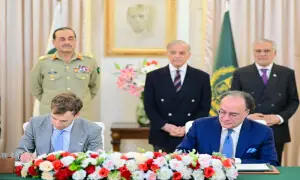

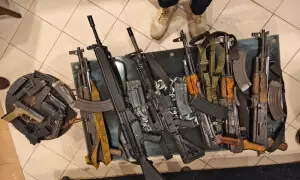


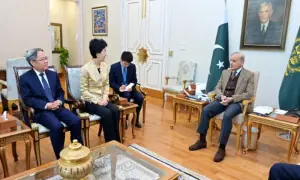
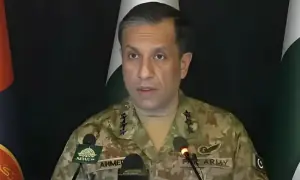

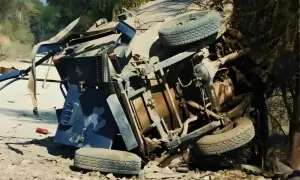
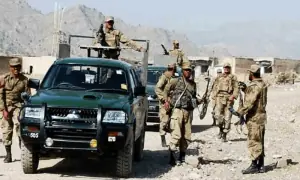

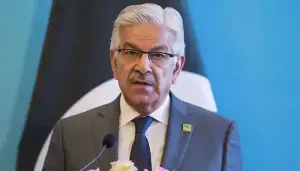
Comments are closed on this story.